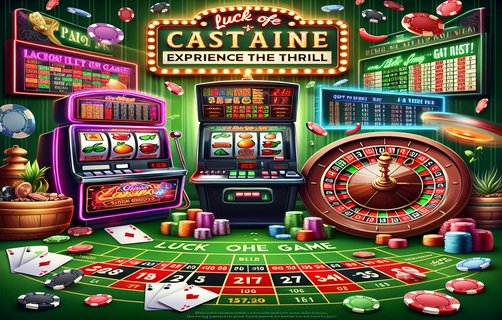Mastering the Art of Teen Patti: A Deep Dive into Strategic Betting
टीने पट्टी का कला: रणनीतिक दांव में गहराई से गोताखोरी
In the vibrant and dynamic world of Teen Patti, participants engage in an exhilarating dance of risk management and psychological maneuvering. Each hand represents a complex interplay of strategy and instinct, where understanding key concepts can make the difference between winning and losing. This article will systematically explore various strategic elements such as risk hedging, hesitant play, slow playing strong hands, pot hand calculation, bluff frequency, bluff pressure play, and decision steadiness.

Risk hedging in Teen Patti is akin to a safety net for players. It involves balancing the potential losses by adjusting bet sizes or playing styles in response to the strengths exhibited by opponents. For instance, if a player senses a strong hand from an opponent, they might reduce their stake to avoid substantial losses, maintaining a defensive posture while assessing the situation.
Hesitant play is often confused with caution but serves a different purpose. By showing indecisiveness in their betting actions, a player can induce uncertainty among opponents. This can sometimes lead to opponents overcommitting or misreading the hesitance as weakness, paving the way for a strategic advantage as the game progresses.
Slow playing strong hands involves deliberately betting less than the strength of the hand would typically warrant. The goal here is to lure opponents into the pot, allowing them to build confidence in their potentially weaker hands. By disguising the true power of one’s hand, a savvy player can manipulate the betting structure, creating larger pots and increasing potential winnings.
Pot hand calculation is crucial for any serious player. This mathematical approach helps determine the odds of winning versus the risk of betting more chips. Players need to assess not only the raw strength of their cards but also how much they are risking in relation to the pot size. Understanding when to push all-in or to fold becomes a calculated decision rooted in numerical analysis.
Bluff frequency refers to how often a player decides to bluff versus playing their hand legitimately. Striking the right balance is essential; too many bluffs can lead to a loss of credibility, while too few can result in missed opportunities. The key is to maintain a consistent pattern that keeps opponents guessing.
Bluff pressure play builds on the notion of inducing fear or uncertainty in opponents when their confidence in their hand may falter. By betting aggressively at strategic moments, players can force opponents into tough decisions, often leading them to fold even when they possess a decent hand.
Finally, decision steadiness involves maintaining composure and adhering to one’s strategy regardless of changing dynamics within the game. A steady decision-making process ensures that players don’t succumb to emotional reactions, enabling them to navigate intense moments with clarity.
These concepts weave together to create a rich tapestry of betting strategies, allowing players to approach Teen Patti not just as a game of chance, but as a nuanced competition of tactics and intellect. True mastery lies in balancing aggression with caution, calculation with instinct, and maintaining an unwavering focus on both the pots and the players around you.
टीने पट्टी की जीवंत और गतिशील दुनिया में, प्रतिभागी जोखिम प्रबंधन और मनोवैज्ञानिक चालबाज़ी के एक रोमांचक नृत्य में भाग लेते हैं। प्रत्येक हाथ एक जटिल अंतःक्रिया का प्रतिनिधित्व करता है, जिसमें रणनीति और अंतर्ज्ञान का समन्वय होता है, जहाँ प्रमुख अवधारणाओं को समझना जीतने और हारने के बीच का अंतर बना सकता है। यह लेख विभिन्न रणनीतिक तत्वों जैसे जोखिम हेजिंग, हिचकिचाहट खेल, मजबूत हाथों को धीरे-धीरे खेलना, पॉट हैंड गणना, ब्लफ आवृत्ति, ब्लफ दबाव खेल, और निर्णय स्थिरता की प्रणालीबद्ध खोज करेगा।
टीने पट्टी में जोखिम हेजिंग एक सुरक्षा जाल के समान है। यह खिलाड़ियों द्वारा संभावित नुकसान को संतुलित करने में मदद करता है, जो स्थिति के आधार पर दांव आकार या खेलने की शैली को समायोजित करते हैं। उदाहरण के लिए, यदि एक खिलाड़ी किसी प्रतिपक्षी से मजबूत हाथ का अनुभव करता है, तो वे अपने हिस्से को कम कर सकते हैं ताकि उन्हें महत्वपूर्ण नुकसान से बचने में मदद मिल सके, स्थिति का आकलन करते समय एक रक्षात्मक स्थिति बनाए रखते हुए।

हिचकिचाहट खेल को अक्सर सावधानी के साथ भ्रमित किया जाता है, लेकिन यह एक अलग उद्देश्य की सेवा करता है। दांव क्रियाओं में अनिश्चितता दिखाते हुए, एक खिलाड़ी प्रतिपक्षियों के बीच अनिश्चितता उत्पन्न कर सकता है। यह कभी-कभी प्रतिपक्षियों को अधिक प्रतिबद्धता करने या हिचकिचाहट को कमजोरी के रूप में गलत समझने की ओर ले जा सकता है, जिससे खेल की प्रगति के साथ रणनीतिक लाभ प्राप्त करने का रास्ता खुलता है।
मजबूत हाथों को धीरे-धीरे खेलना उस स्थिति की रेखा को समझने की कोशिश करता है जब एक खिलाड़ी जानबूझकर इतना दांव नहीं लगाता जितना हाथ की ताकत से पहले छोड़ देना चाहिए। इसका लक्ष्य प्रतिपक्षियों को पॉट में लुभाना है, उन्हें निम्न-कुशल हाथों में आत्मविश्वास बढ़ाने की अनुमति देकर। एक निपुण खिलाड़ी अपने हाथ की सच्चाई को छुपाते हुए दांव संरचना को चालित कर सकता है, बड़े पॉट्स का निर्माण कर सकता है और संभावित जीत को बढ़ा सकता है।
पॉट हैंड गणना किसी भी गंभीर खिलाड़ी के लिए महत्वपूर्ण है। यह गणितीय दृष्टिकोण खिलाड़ियों को जीतने की संभावनाओं और अधिक चिप्स लगाने के जोखिम का आकलन करने में मदद करता है। खिलाड़ियों को केवल अपने कार्डों की कच्ची ताकत का मूल्यांकन नहीं करना चाहिए, बल्कि उन्हें यह भी देखना चाहिए कि वे पॉट का साइज देखते हुए कितना जोखिम उठा रहे हैं। सभी इन में पुश करने या फोल्ड करने का निर्णय गणनात्मक विश्लेषण पर आधारित होता है।
ब्लफ आवृत्ति का तात्पर्य है कि एक खिलाड़ी अपने हाथ को वैध तरीके से खेलने के लिए कितनी बार ब्लफ करने का निर्णय लेता है। सही संतुलन बनाना आवश्यक है; बहुत सारे ब्लफ अविश्वास का कारण बन सकते हैं, जबकि बहुत कम अवसरों को चुकाने का नतीजा हो सकता है। कुंजी यह है कि एक निरंतर पैटर्न बनाए रखा जाए जो प्रतिपक्षियों को उलझन में डालता है।
ब्लफ दबाव खेल प्रतिपक्षियों में डर या अनिश्चितता पैदा करने के विचार पर आधारित है जब उनके हाथ में आत्मविश्वास प्रभावित हो सकता है। रणनीतिक क्षणों में आक्रामकता से दांव लगाकर, खिलाड़ी प्रतिपक्षियों को कठिन निर्णयों में डाल सकते हैं, जो अक्सर उन्हें अच्छी स्थिति में फोल्ड करने के लिए मजबूर करती है।
अंत में, निर्णय स्थिरता का तात्पर्य है कि एक खिलाड़ी अपनी रणनीति को बनाए रखते हुए स्थिति के बदलाव के बावजूद ठंडा रहता है। एक स्थिर निर्णय लेने की प्रक्रिया सुनिश्चित करती है कि खिलाड़ी भावनात्मक प्रतिक्रियाओं का शिकार न हो, जिससे वे तीव्र क्षणों को स्पष्टता के साथ नेविगेट कर सकें।
ये अवधारणाएँ एक समृद्ध दांव रणनीतियों के ताने-बाने को बुनती हैं, जिससे खिलाड़ियों को टीने पट्टी के खेल में एक चुनौती प्रस्तुत की जाती है। सच्ची मास्टरशिप में आक्रामकता और सावधानी, गणना और अंतर्ज्ञान का संतुलन बनाना और आपके चारों ओर के खिलाड़ियों और पॉट्स पर ध्यान बनाए रखना शामिल है।

comments
GamblerGuru
Such an insightful breakdown of Teen Patti strategies! This will definitely help me step up my game.
CardShark47
I love the creativity in explaining the concepts! Can't wait to try these tactics.
LuckBeALady
The section on bluff frequency is pure gold! I need to implement that in my next game.
PokerPro123
What a fantastic analysis! The blend of math and strategy is truly impressive.
BettingBeast
Great article! I especially liked the part on decision steadiness. It's a game changer!